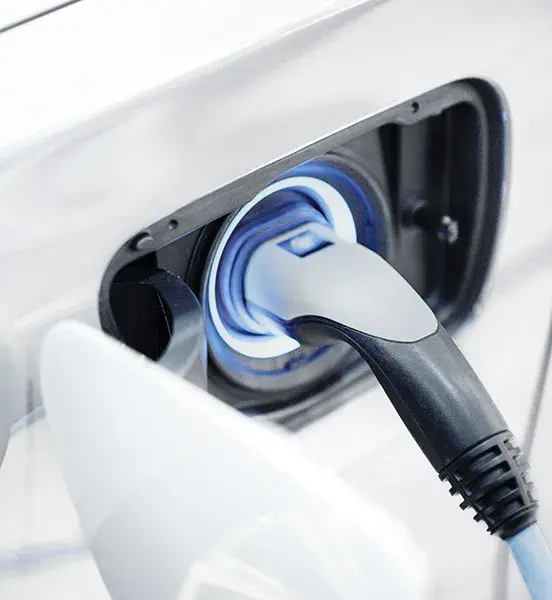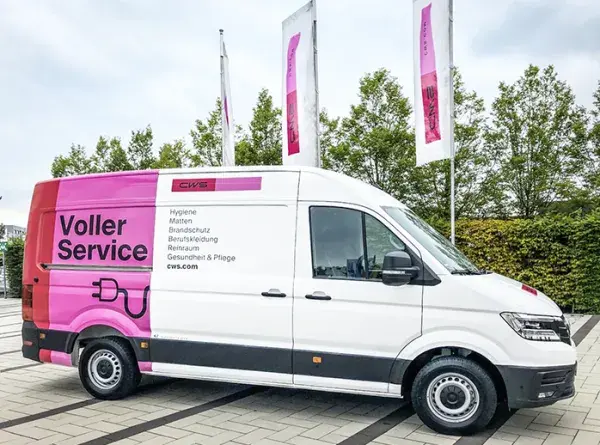Cleaner service? Let’s test it!
01/2021

With the achievement of its sustainability goals in mind, CWS is testing various options for cutting CO2 emissions. One such option is the deployment of electric vehicles for service trips.
A pilot project headed by Mehmet Irmak, Director Strategic Sourcing at CWS has been running at the three locations in Hamburg, Frankfurt and Stuttgart since summer 2020.
“We need to reduce our service fleet’s environmental footprint if we wish to become and remain a sustainability-driven company,” he explains. “After an internal due diligence process, in other words a thorough check on all parameters, we purchased three e-Crafters since these best meet our requirements.” The test drives are aimed at examining options and identifying possible weak points. The biggest challenge lies in the vehicles' range. “It depends on the ambient temperature, the route profile, the driving style and the load,” says Mehmet Irmak. “The ideal route profile is currently a trip of between 80 and 120 kilometres in city traffic with a load of maximum one tonne. Indeed, the frequent braking in city traffic actually helps recover energy. Trips involving motorways, on the other hand, shorten the vehicle's range considerably.” Further energy-saving routes were therefore determined by way of which a service trip can be completed with ideally one single battery charge.

Jochen Müller from Stuttgart, one of the test drivers, reports: “On a longer trip, a colleague had to drive to a supermarket parking lot to recharge. Nothing like that has happened to me yet. I am extremely satisfied with the performance and handling of the E-Crafter.” The lower load capacity and the lack of a loading door on the passenger side make things more difficult in daily handling, however. “But it feels good to be doing something for the environment.”

Mehmet Irmak intends to make his recommendations when the data have been evaluated in March. “A lot naturally depends on the technical maturity of the available e-models,” he says, “but I can well imagine switching part of our fleet to e-mobility.”
E-mobility
E-vehicles are powered entirely or partially by electricity. Since the transport sector accounts for around 60 percent of oil demand nowadays, the large-scale switch to electromobility can significantly reduce the use of fossil fuels. The fact that an e-vehicle generates no emissions while in motion means that CO2 emissions are cut by between 54 and 82 percent over its life cycle as compared to an internal combustion-engined vehicle. E-models are admittedly a bit more expensive to buy than vehicles with internal combustion engines, but this is offset by lower maintenance and usage costs.